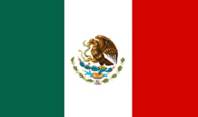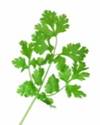September is a tribute to our neighbors south of us. Mexico is a country with very beautifully rich history, from its people to…well it’s food. Mexican food is a mainstay for Americans but it can be very rich in calories, fat & sugars. Here are some ideas to both enjoy the wonderful cuisine while staying healthy…Enjoy!
Cinnamon Up Your Life
Cinnamon is a very common spice used in Mexican cuisine. There have been many studies discovering the many possible benefits of cinnamon such as: glucose metabolism, antiseptic powers against bacteria’s and fungi and even for improving brain function.
Some of the possible ways in which one can enjoy this power spice:
– Add a cinnamon stick to flavor your favorite tea
– Add to unsweetened applesauce, cereal or oatmeal
– Sprinkle on toast or add to butter or cream cheese
– Sprinkle on coffee, cocoa, fruit juices, and ciders
– Add cinnamon to your favorite baked goods
Remember after opening your cinnamon store it in a tight sealed container away from the light.
——————————————————————————————————–
Colorful Bean Salad
INGREDIENTS
16 ounces garbanzo beans, canned
16 ounces kidney beans, canned
16 ounces black beans, canned
16 ounces corn, canned
2 tablespoon apple cider vinegar
1 tablespoon extra virgin olive oil
2 ounces roasted red bell pepper, from a jar, diced
6 ounces green bell pepper, seeded, small dice
2 tablespoons cilantro, fine chop
1 tablespoon Italian parsley, fine chop
METHOD
* Rinse and drain all canned items. In a large bowl, combine all ingredients. Chill before serving for 15-20 minutes.
Servings: 16
Per ¾ cup serving: Calories: 130 calories, Fat: 2g Carbs: 24g Pro 4g
——————————————————————————————————————
Rice Pudding
INGREDIENTS
1 cup brown rice
3 cups water
12 ounces evaporated milk, non fat
3 tablespoons condensed milk, low fat
2 ounces raisins
1 teaspoon ground cinnamon
METHOD
In a medium saucepan, combine rice, and water. Cook over low heat, covered, for 13 minutes, until tender. Add evaporated milk and condensed milk and raisins. Stir well . Cook 8-10 minutes. Rice should be moist, liquid (milk) should not be completely dry. Serve in individual plates. Garnish by sprinkling with cinnamon.
Makes 4 cups, 16 Servings
Per serving OF 1/2 cup each: Cals: 160 Fat: 1.5g Carbs: 25g Pro: 7g
——————————————————————————————————————
Cilantro…the Aphrodisiac
When speaking of spices & herbs, I would be remised to not mention this staple herb, thought to be an aphrodisiac and have healing properties, and adds great flavor to a variety of foods. It looks like parsley and is best when fresh. Here are some ways to enjoy it: use cilantro leaves instead of basil in tomato-mozarella salad, sprinkle 1tbsp chopped cilantro over scrambled eggs, add a few leaves to grilled cheese sandwiches, garnish Bloody Mary’s with a whole sprig or two, use in marinades for chicken, fish, shellfish, lamb, and pork.
————————————————————————————–
Summer Fruits
The great thing about Mexico is the availability and use of wonderfully refreshing fruits. Fruits are packed with vitamins, fiber, antioxidants and will help hydrate to keep you looking young and feeling good. For fun, healthy treats for the whole family, try:
- Adding sliced citrus fruits like lemon, lime, or orange to your water
- making ice cubes from fruit juice rather than reaching for a soda.
- Adding sliced berries or a banana to your cereal or waffle for a refreshing summer breakfast.
- Adding fruits such as mangoes and berries to your salad for a sweet summer flavor.
- Serve fresh fruits for dessert which are just as sweet but lower in fat than cakes and ice cream
——————————————————————————————————————
Mexico Fun Fact
Generally, Mexican food follows tips and instructions form Aztec recipes, which have been handed down
——————————————————————————————————————
FITNESS CORNER:
For this segment I am emphasizing Recovery Nutrition:
The body stores carbohydrates, in the form of glycogen, in very limited amounts. It is thus important to maximize that storage capacity, to prevent the risk of running out of energy before the training session is over.
The enzyme responsible for storing glycogen is elevated after exercise. It is elevated within 30 minutes post-exercise, but remains above normal levels up to 24 hours later. It is therefore vital to take in an adequate amount of carbohydrates as soon after exercise as possible. Adding some protein to that meal or snack will not only enhance glycogen storage capacity, but it will also aid in muscle recovery.
The following calculation can be used to figure out how much is an adequate amount of carbohydrate to consume after your intense workouts.
Body Weight (lb.) x .5 g/lb = _____ g of Carbohydrate
example Athlete is 140 lbs ::: 140 lb x .5 g/lb
= ~ 70 g of carbohydrate is required for recovery
To facilitate glycogen resynthesis as well as muscle recovery eat a ratio of approximately 3:1 or 4:1 carbs to protein. So once you calculate how many grams of carbs you need for recovery, you can figure your protein needs by dividing by 3.
A great idea:
Ezekiel English muffin with an egg soufflé
(lets call it Huevos Ilanos in honour of our Mexican theme)
Method:
Spray a muffin tray with Pam. In each section pour about 3 oz of egg whites (1 egg white = 1 oz). Add in some cut up veggies of choice, such as peppers, spnach, mushrooms. Add some salt and pepper to taste, and sprinkle with a little parmesan cheese (optional).
Bake at 350 degrees for approx 30 – 35 minutes (until eggs are set). Each egg soufflé is about 16g of protein. The English Muffin is about 30g of carbs, so with a side of fruit, this would make a perfect recovery meal from a hard work out.
Have a healthy month!!
ILANA






















